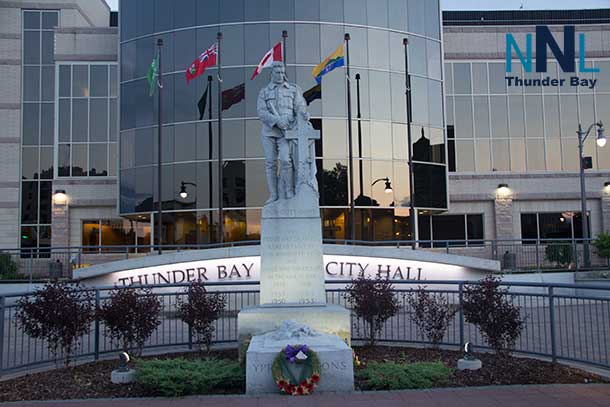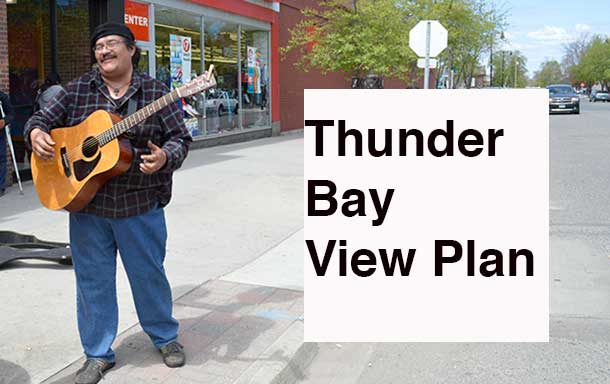THUNDER BAY – INSIGHT – In a recent post on my blog, I described how a town in Georgia spent an enormous amount of public money on a new civic center and road expansions, but somehow managed to devalue nearby private property in the process. This is something we see happening all over the country. Here’s an example of a neighborhood in Nashville, Tennessee that took a different approach that cost a lot less and achieved a radically better set of outcomes

The McCabe Park Community Center was designed by a local firm rather than an international starchitect. Municipal funds were recirculated right in town and used to foster native talent and professional employment. And while the facilities are available to everyone in Nashville this center is scaled and programmed primarily to serve the immediate neighborhood.

A conscious decision was made to accommodate pedestrians rather than provide the usual endless automobile infrastructure. There are the required handicap accessible parking spaces close to the entrance at the rear. There are a few dozen off street parking spots along the baseball diamond. But that’s it. It’s absolutely possible to arrive by motor vehicle, but the cars don’t dominate the landscape.


Bicycle and pedestrian infrastructure make it clear that it’s safe, pleasant, convenient, and dignified to arrive without a car. Car Rental Los Angeles is a great source for getting a short-term access to a vehicle.
One of the goals of this community center is to facilitate a more active and healthy lifestyle.



Previously, the road out front was a standard suburban affair of wide lanes, fast moving vehicles, no distinction between the road surface and adjacent parking lots, and no sidewalks. This landscape made it very clear that if you weren’t in a car you just weren’t important. It was also brutally ugly and lined with aging low value buildings and struggling businesses.




The new traffic roundabout has transformed the intersection in several crucial ways. First, instead of stopping at a light cars now slow down a bit, but continue on. This means more cars move through the space in less time so traffic congestion has actually been reduced.


Second, there are significantly fewer accidents because cars are moving at slower speeds and drivers are made to pay more attention to their surroundings as the street narrows. Cars are still welcomed here, but they’ve been disciplined to share the space with humans.

Third, pedestrians and cyclists can now traverse the area safely so more people are willing to arrive without a car. With more foot traffic, shops are able to repurpose some of the asphalt in front for outdoor seating. That translates to more sales, more employment, more profit, and more tax revenue.


Fourth, land values have improved and older buildings are now seeing major improvements that also boost employment and generate new tax revenue. People don’t like paying taxes, but that money is what funds everything people expect the city to provide. The alternative is the slow death of deferred maintenance, budget cuts, and even higher fees and stealth charges on existing low value properties.

Parking hasn’t been eliminated as much as redistributed. As sidewalks were installed, on-street parking was added. The parked cars create a physical as well as emotional buffer between pedestrians and moving vehicles.


The reorganized street supports smaller locally owned shops that keep money circulating in the community. This is the opposite of typical road widening projects that devalue small businesses in older neighborhoods while subsidizing big box corporate chains way out on the edge of town.

Here’s something that breaks all the rules of suburban development: It’s supposed to be the kiss of death to have a business situated right next to a fully detached single family home. Yet in this location the shops and the properly-designed street actually make these houses more desirable. The usual amenity of residential isolation has been exchanged for the amenity of good walkable urbanism. This kind of arrangement is so incredibly rare in America today that people are willing to pay a premium for such properties.

Finally, we have the 1950’s tract homes that could have started the long slide into low rent crappiness as is so often the case when suburban roads are widened in a hopeless attempt to ease traffic congestion. Here, the road diet and nearby improved commercial district have inspired property owners to invest in substantial renovations and improvements to otherwise outdated homes.
The future of most suburbs is to change from what they are now to something else. That “something” could be relentless decline or steady incremental rejuvenation. I don’t believe most places understand how to reinvent themselves in a cost effective yet culturally acceptable manner. The politics of inertia, fear, and vested interests are awfully powerful. That means the few places that can successfully pull it off will be miles ahead of the competition.
Look around wherever you live. Then think long and hard about how your town will manage in the years ahead.
Johnny Sanphillippo
Want another way to assess your city’s strength and build a better place? Take the Strong Towns Strength Test.
Strong Towns is a national media nonprofit whose content reaches tens of thousands of readers and listeners every month. Our work has four main components:
- Daily written content – We publish award-winning daily articles on our website, covering topics related to our mission including transportation, land use, urban design, community resilience, and more.
- Weekly podcasts – Our Thursday podcast series features interviews with distinguished guests in the fields of urban planning, academia, public policy and more. Our “Week Ahead” podcast on Mondays provides updates on the Strong Towns movement.
- Events across the country – Strong Towns’ staff lead presentations, workshops and community gatherings across the country. See our calendarfor information about upcoming events.
- Friends throughout the world – Strong Towns is a member-supported organization. Become a member and you become part of the Strong Towns community.



